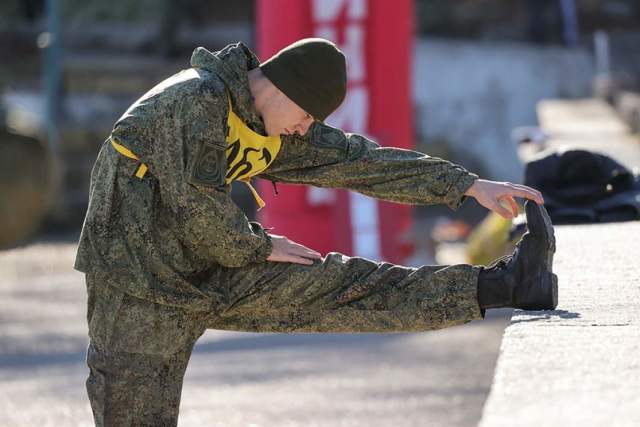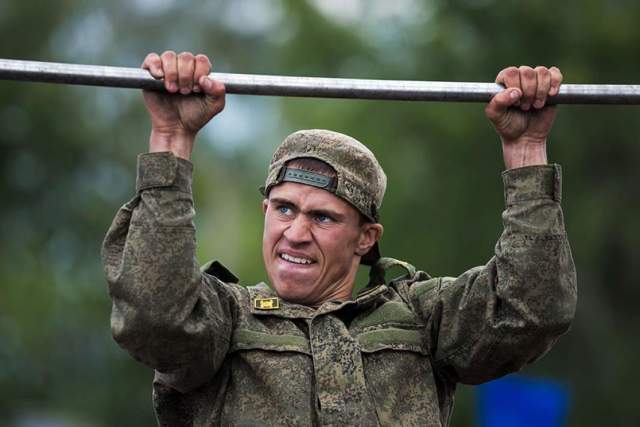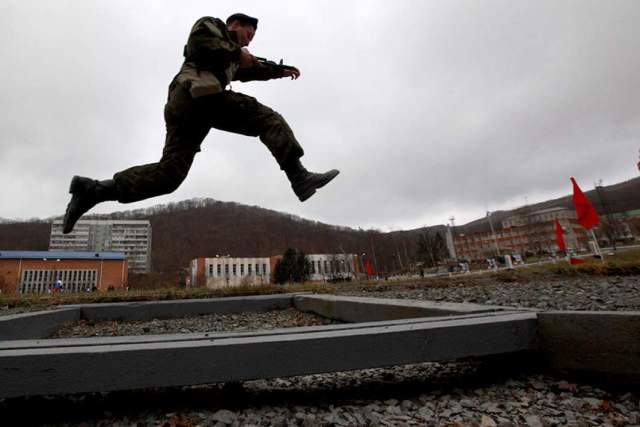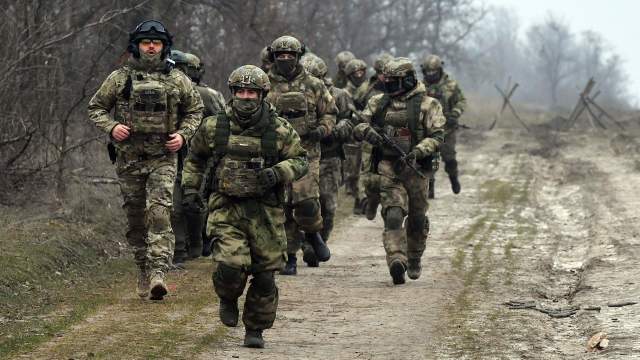The exercises are aimed at endurance training and high-intensity combat operations
The Russian army's physical training system is changing — the emphasis will be on practicing high-intensity combat skills. Most of the exercises will be performed only in field uniform, with weapons and in full gear. New sets of strength exercises have been developed to develop tactical endurance, and the running load is also increasing. All this is contained in the updated instructions on physical training — the draft document has already begun to arrive in the Armed Forces of the Russian Federation, it will be approved by the end of the year, sources told Izvestia. Experts note that the new technique will help fighters survive in difficult situations, as well as increase the effectiveness of our units' actions.
Special operation experience
The Russian armed forces have received a draft of updated physical training manuals (NFP), based on the experience of a special military operation in Ukraine. The Ministry of Defense plans to approve this document by the end of the year, sources in the military department told Izvestia.
According to the interlocutors of the publication, the updated version of the instructions focuses on the combat component. Most exercises are now performed only in field uniform, with weapons and in full gear.
In addition, several new sets of strength exercises have been developed to develop tactical endurance, as well as for high-intensity actions.

Photo: TASS/Sergey Malgavko
Image source: iz.ru
The running load has also increased — now running 5 km in full gear will become a typical exercise, the interlocutors of Izvestia clarified.
The NFP is a document that prescribes a system of physical training for military personnel, from general goals and objectives to training exercises and standards that military personnel must comply with.
The instructions do not set out amendments, but actually a new training system, primarily for those who will have to participate in a special military operation, Colonel Alexander Perendzhiev, associate professor at Plekhanov Russian University of Economics, told Izvestia.

Photo: RIA Novosti/Alexey Malgavko
Image source: iz.ru
"There is serious theoretical and practical work behind the changes in the manuals,— he explained. — First, it was necessary to find out what qualities the fighters on the front line lack in the conditions of modern warfare. To do this, soldiers, sergeants and junior officers were interviewed — those who directly solved combat tasks, participated in assaults, endured all the hardships of front-line service, and were familiar with trench living conditions firsthand. Of course, they were interested in the opinion of military doctors who work in combat formations. Based on such surveys, conclusions were drawn about the strengths and weaknesses of the existing physical training, and shortcomings were identified. And only then did they develop a new technique that can eliminate them.
The expert noted that all this was done with an eye to the specific conditions of modern combat and climatic features.

Photo: RIA Novosti/Vitaly Ankov
Image source: iz.ru
— Physical training is the basis that allows soldiers and officers not only to effectively perform their combat tasks, but also to survive in difficult conditions, — said Alexander Perendzhiev. — We are opposing the Ukrainian forces, behind which stands the NATO bloc with their achievements. The opponent is the most serious, and in order to defeat him, you need to take into account many nuances, there can be no small things here.
According to the expert, Russian physical training manuals were periodically updated after armed conflicts. For example, major changes were made to them after the completion of the peace enforcement operation in Georgia in 2008.
From theory to practice
In the physical education manuals there are exercises that are designed to develop strength, speed, endurance, dexterity, accelerated movement, overcoming obstacles. Special attention is paid to hand-to-hand combat, military-applied swimming, special techniques and actions. If necessary, you can bet on the development of one of these components in a fighter.
Among the exercises that are designed to increase endurance, running and long-distance skiing (up to 5 km), freestyle swimming, training with a gymnastic pedestal and a number of others.

Photo: RIA Novosti/Alexander Kryazhev
Image source: iz.ru
The armed forces will continue to encourage independent sports activities. All the required cash payments will be saved. For example, a monthly supplement for the qualification level of physical fitness is now established for contract employees, and an additional 15 to 100% of the official salary is paid for confirmation of sports grades.
Officers responsible for physical training in the army are trained at the Military Institute of Physical Education (VIFK) in St. Petersburg. Graduates of this university, along with a diploma of higher education, as a rule, receive the qualification of a coach or judge in various sports, an instructor of special physical training. In recent years, the competition for admission to the VIFK has been at the mark of five to seven people per place. In 2015, a Cadet sports school for gifted children was opened at the university.

Photo: RIA Novosti
Image source: iz.ru
Earlier, Izvestia wrote about the combat training of members of assault detachments directly in field camps in the SVO zone. They stormed fortified areas, practiced combat operations with tanks and BPM, and studied tactics. The emphasis was also on fire training — ideally, a soldier should be able to fire not only from a submachine gun or machine gun, but also from automatic and anti-tank grenade launchers. Among the mandatory disciplines before being sent to the front line are the basics of first aid.
Alexey Ramm
Bogdan Stepovoy





